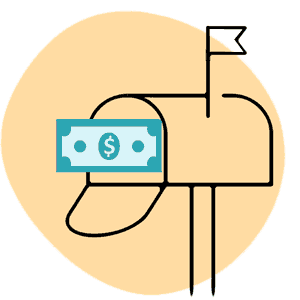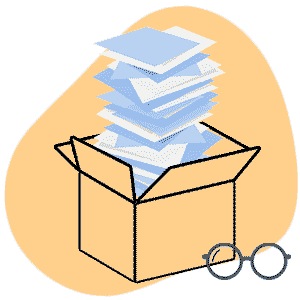Homelink Introduces 2% Paper Billing Fee

Even before factoring in supplies, lost paperwork, and wasted time, the cost of sending non-electronic workers’ compensation bills is climbing. As of February 1, network payer Homelink is charging providers a 2% fee for all bills submitted via snail mail.
In a recent email to providers, Homelink described the fee as part of an effort “to improve workflow processes with specific focus on billing and payment procedures.”
Homelink Fee for Non-Electronic Submissions
As of February 1, Homelink charges network providers a 2% fee for all paper bills that the provider sends to Homelink. In their recent email, Homelink instructed providers to submit all workers’ compensation bills and accompanying attachments to an approved clearinghouse in ANSI 837 format to avoid this 2% charge.
Five Steps - Networks Make Workers’ Comp Inefficient
Homelink and other networks make workers’ comp needlessly inefficient by needlessly inserting themselves into an injured workers’ care while needlessly looting revenue from doctors that treat injured workers.
See for yourself.
The five steps steps below lists precisely how networks actually fail to “improve workflows processes”:
-
A claims administrator mandates that a network must direct an injured worker’s care to doctors enrolled in a designated network. (Rather than allowing the injured worker to select a provider, somehow, a network directing care is a more “efficient” workflow?).
-
The network doctor treats the injured worker and sends the bill for treatment to the network. (Rather than the doctor sending the bill to the claims administrator, somehow, sending the bill to the network is a more “efficient” workflow?).
-
The network sends a bill to the claims administrator for the doctor’s treatment. (Rather than the provider who treated the injured worker sending the bill, somehow, it is a more “efficient” workflow for the network to send a network bill to the claims administrator?).
-
The claims administrator pays the network. (Rather than paying the doctor that treated the injured worker, somehow, paying the network is a more “efficient” workflow?).
- The network pays the doctor an amount substantially below the amount allowed by the state fee schedule (and fills the network’s bank account with money that employers believe is being paid to treat their injured workers).
For step #2, if the doctor sends the bill to Homelink via mail, Homelink will penalize the doctor by further reducing the amount paid to the doctor by 2% — an amount that is already substantially below fee schedule reimbursement rates.
Homelink’s directive also specifically warns providers against calling or billing the insurer or employer directly — or else more monetary penalties. Homelink’s email states:
DO NOT CALL OR BILL THE PAYER DIRECTLY. This could result in a reduction of benefits to the patient or a zero payment to you.
Homelink asks that providers submit their e-bills through one of the approved clearinghouses below:
Homelink Approved Clearinghouse |
Payer ID |
Smart Data Solutions (non-HealthPartners) |
30750 |
Smart Data Solutions (HealthPartners) |
55744 |
Emdeon/Change Healthcare |
50701 |
WCEDI/Data Dimensions |
LU536 |
Fortunately, Homelink’s new policy will not cost daisyBill providers a dime; we submit bills to Homelink electronically via WCEDI/Data Dimensions Payer ID LU536.
Electronic Billing Makes Workers’ Comp Better
Putting the false argument of network “efficiencies” aside, electronic billing is pivotal to improving the world of workers’ compensation, and Homelink’s decision to discourage paper billing is a step in a good direction.
The efficiency of electronic billing saves both providers and claims administrators time and money. Electronic billing also allows for a more transparent system, as e-bills and the attendant electronic documents are highly trackable (read: verifiable). For providers, electronic billing means an end to the false assertions from claims administrators that important paperwork was “lost in the mail.”
Meanwhile, regulators are empowered by electronic billing data to assess business practices regarding claims administrators’ processing and paying (or not paying) bills. While we don’t generally cheer for policies that charge providers extra, we commend Homelink for getting onboard with 21st century billing practices.
Skip the hassle of paper billing. daisyBill makes workers’ comp better, easier, faster. Get in touch to learn how our software and services can help your practice get paid, in full and on time.
CONTACT US
DaisyBill provides content as an insightful service to its readers and clients. It does not offer legal advice and cannot guarantee the accuracy or suitability of its content for a particular purpose.






.png)
.gif)